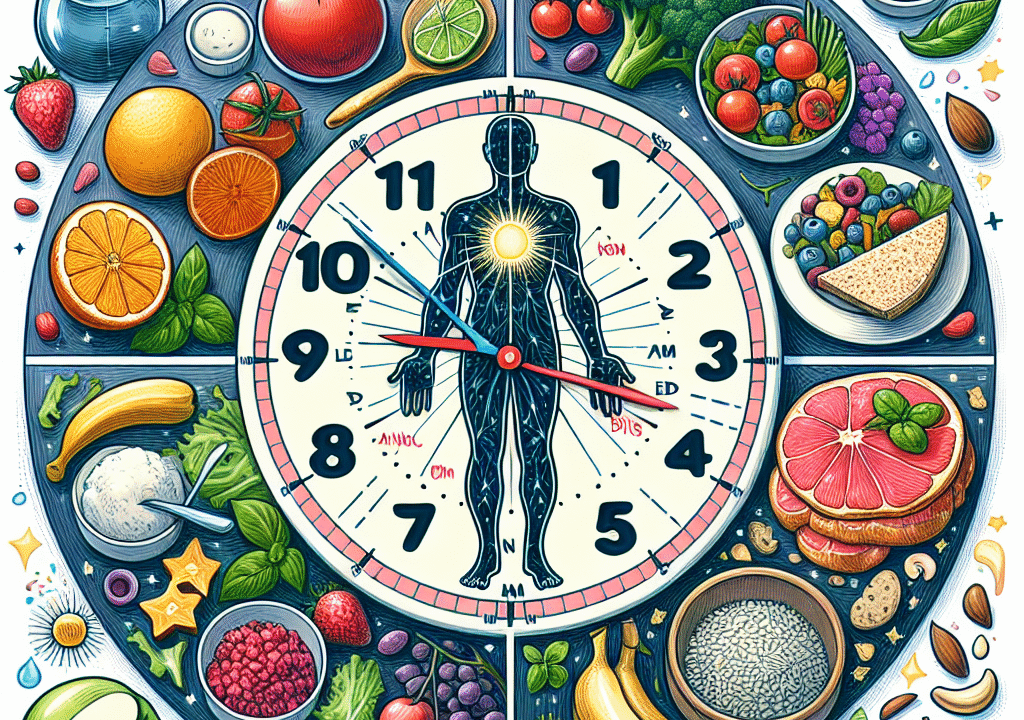
The Ultimate Plant-Based Athlete Nutrition Timeline
Are you a plant-based athlete striving for peak performance all year? Whether you’re training for a marathon, preparing for a triathlon, or simply building long-term strength and endurance, a structured, month-by-month vegan sports nutrition plan can make a huge difference.
The Academy of Nutrition and Dietetics affirms that a properly planned plant-based diet is appropriate for athletes at all stages of life. By applying seasonal strategies and nutrient-rich whole foods, plant-powered athletes can reduce inflammation, enhance recovery, and optimize long-term health.
Let’s explore the month-by-month guide to plant-based athletic nutrition for performance at every stage of training.
Month 1: Establishing a Strong Nutritional Foundation
Every successful training plan starts with building a strong foundation. During this initial phase, it’s crucial to evaluate your current fitness and nutritional habits.
Key Priorities:
– Track your daily food intake using apps like Cronometer to monitor both macronutrients and micronutrients.
– Schedule comprehensive bloodwork to assess levels of vitamin B12, iron, vitamin D, and omega-3s.
– Strengthen daily hydration habits by drinking half your body weight in ounces of water.
– Focus your meals on whole plant foods: lentils, beans, whole grains, leafy greens, flaxseeds, and berries.
Nutritional Highlight:
Recent findings published in Nutrients (2023) showed that over 26% of vegan athletes had inadequate levels of vitamin B12 without supplementation. Daily intake should be at least 2.4 micrograms, sourced from fortified foods or supplements.
Expert Insight:
“Foundation work sets the tone for the entire training season,” explains Dr. Pamela Fergusson, RD. “Nutrient testing is especially important for key vitamins like B12, iron, and vitamin D.”
Tip: Begin supplementing with a reliable B12 source (methylcobalamin or cyanocobalamin) and consider adding an algae-based omega-3 supplement with 250–500 mg of DHA/EPA.
With your baseline established, you’re ready to boost your endurance in Month 2.
Month 2: Enhancing Endurance with Strategic Fueling
As your training ramps up, your energy demands increase. Month 2 focuses on dialing in energy-rich, high-carb meal strategies to support endurance.
Goals for This Phase:
– Prioritize slow-digesting complex carbohydrates: oats, sweet potatoes, bananas, and whole grains.
– Include optimal pre-training snacks like dates with almond butter, a banana with tahini, or oatmeal.
– Focus on nutrient-dense post-exercise meals: quinoa and lentil bowls, or hummus wraps with veggies.
Hydration Strategy:
Drink 16 to 24 ounces of water two hours before workouts. For sessions lasting more than 90 minutes, add electrolytes. Homemade options like water with lemon, sea salt, and maple syrup offer a cost-effective alternative to commercial drinks.
Sample DIY Hydration Formula:
Mix 16 ounces of water, the juice of half a lemon, 1/8 teaspoon of sea salt, and one teaspoon of maple syrup.
Did You Know?
Even mild dehydration—just 1–2% loss of body weight—can reduce endurance performance by 5–10%, according to the Journal of the International Society of Sports Nutrition.
Up next: boosting strength and building lean muscle mass in Month 3.
Month 3: Muscle Building and Strength Development
Transitioning from endurance to strength requires intentional fueling strategies centered on protein and muscle support.
Smart Protein Tips:
– Incorporate a variety of protein-rich plant foods such as tofu, tempeh, chickpeas, lentils, soy milk, and quinoa.
– Target 1.4 to 2.0 grams of protein per kilogram of body weight daily.
– Add calorie-dense ingredients like nut butters, avocado, trail mix, and tahini to amplify meals.
Expert Insight:
“Plant-based athletes can meet protein requirements with the right approach,” says Robert Cheeke, co-author of The Plant-Based Athlete. “Focus on diversity, consistency, and adequate volume.”
Example High-Protein Day:
– Breakfast: Chia pudding with soy milk, banana, and almond butter
– Lunch: Tempeh lettuce wraps with quinoa tabbouleh
– Snack: Protein smoothie with hemp seeds and unsweetened protein powder
– Dinner: Lentils over brown rice with kale and tahini sauce
Next, in Month 4, prioritize recovery to prevent burnout and injuries.
Month 4: Supporting Recovery and Preventing Fatigue
With increased training intensity, rest and recovery must become top priorities to avoid stagnation or injury.
Recovery Strategies:
– Incorporate anti-inflammatory foods daily: berries, turmeric, cacoa, leafy greens, and ginger.
– Boost omega-3 intake from sources like hemp seeds, flaxseeds, chia seeds, and algae oil.
– Ensure 7–9 hours of high-quality sleep and commit to screen-free time before bedtime to improve recovery.
Gut Health Support:
Add fermented, plant-based options like sauerkraut, miso, kimchi, or unsweetened yogurt alternatives to enhance digestion and immunity during high-volume training phases.
Stat Check:
A study in the British Journal of Sports Medicine found that over 60% of overtrained athletes showed elevated markers of chronic inflammation. Prioritize sufficient rest days and sleep hygiene.
Prepare to take your training intensity to the next level in Month 5 with race-day simulation techniques.
Month 5: Peak Training and Race Simulation Strategies
This is the phase where intensity and strategy meet. Simulating race-day conditions during training can improve both physical readiness and mental resilience.
Key Nutrition Tactics:
– Test pre-race dinner options like whole grain pasta with marinara and tempeh the night before long sessions.
– Have a high-carb, low-fiber breakfast 2 hours before workouts: toast with peanut butter and jam works well.
– Refine hydration strategies using coconut water or homemade electrolyte formulas.
Boost Iron Absorption:
Vegan iron sources—such as lentils, tofu, and pumpkin seeds—are best absorbed when paired with vitamin C-rich foods like oranges, bell peppers, or kiwi.
Carbohydrate Loading:
Begin carbohydrate loading 2–3 days before your most intense sessions, focusing on increasing carbs to about 65–70% of daily calories via grains, fruits, and starchy vegetables.
All this prepares you for your final push—race day—in Month 6.
Month 6: Race Day Nutrition and Post-Event Recovery
On race day, the focus shifts to consistency and familiarity. Stick with tested meals and hydration routines.
Race Day Nutrition Plan:
– Night-before meal: high-carb, low-fat, and low-fiber options like jasmine rice with sweet potatoes and tofu.
– Pre-race snack: a banana and a Medjool date with water and electrolytes.
– Post-race: Recover with a smoothie containing soy milk, banana, protein powder, and berries.
Days After the Race:
Prioritize hydration, gentle movement, and deep rest during the post-race recovery phase. Consuming nutrient-dense, easy-to-digest meals will support healing and energy restoration.
Snack Tip:
Choose easily digestible snacks during the race such as energy chews or dried fruit supplemented with electrolytes.
Next is Month 7, where you reflect, reset, and enjoy diverse movement.
Month 7: Active Recovery and Off-Season Enrichment
After completing your race or performance peak, allow space for recovery—physically and mentally. This phase is all about gentle restoration and cross-training.
Off-Season Priorities:
– Ease into comforting, lightweight meals: try lentil stews, avocado toast, or hearty soups.
– Keep gut health top of mind with fiber-rich beans, fennel, miso, and plant-based kefir alternatives.
– Experiment with low-impact activities like gentle yoga, swimming, or mindful nature walks.
Lifestyle Reset:
Reduce sugar and caffeine, and focus on regulating sleep cycles. This month is about reinvigorating the body and mind rather than pushing boundaries.
Variety Tip:
Add excitement to meals by trying one new global dish each week—such as Mediterranean lentil bowls, Korean bibimbap, or Ethiopian injera—to introduce new textures, nutrients, and flavors.
Get ready to transition into long-term planning and performance improvement in Month 8.
Month 8: Off-Season Strategy and Long-Term Progress
The final month emphasizes assessment, fine-tuning, and strategic planning for the next training season.
Long-Term Optimization Steps:
– Repeat your complete bloodwork panel with a healthcare professional to track improvements and address deficiencies.
– Adjust caloric and macronutrient needs based on new goals and current body metrics.
– Explore new recipes and supplement brands that align with your evolving training load.
Grocery List Enhancements:
– Stock up on calcium-fortified plant milk
– Add selenium-rich Brazil nuts (2–3 per day)
– Include zinc sources like pumpkin seeds and chickpeas
Expert Insight:
“The off-season is when you repair, rebuild, and reset—at a slower pace, but with equal importance,” explains Dr. Susan Levin, RD. “This phase lets you correct imbalances and prepare for future progress.”
Final Thoughts: Progress Through Plant Power
Optimizing your plant-based nutrition throughout the year can translate into real gains in stamina, strength, recovery, and overall vitality.
Quick Recap:
– Fuel endurance with complex carbs, hydration, and electrolytes
– Build strength using strategic protein intake and calorie-dense meals
– Enhance recovery through anti-inflammatory foods and sleep optimization
– Sustain results with consistent blood monitoring and sustainable planning
Stay motivated, be adaptable, and continuously learn. Whether you’re a weekend warrior or a competitive athlete, this personalized timeline gives you the tools to thrive on a compassionate, high-performance plant-based path.
Ready to make it easier? Stay tuned for the launch of our FREE Plant-Based Athlete Meal Planner and Grocery Guide—coming soon!


